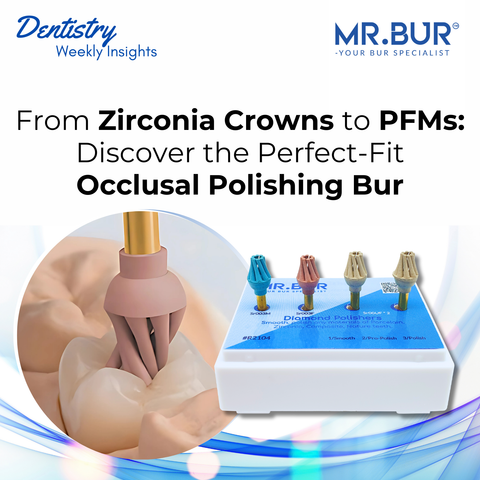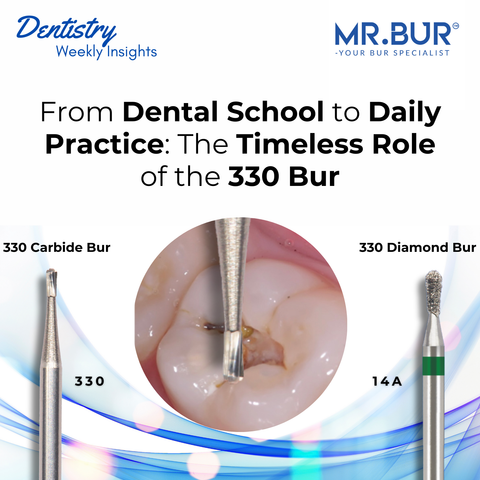Composite restorations are a mainstay in restorative dentistry, but their success depends not only on the material and placement technique, the surface finish is equally critical. A smooth, glossy finish improves esthetics, reduces plaque retention, increases patient comfort, and significantly extends the restoration’s lifespan. Modern one-step systems now allow clinicians to achieve this efficiently with precision.
Why Surface Finish Defines Composite Success
-
Biological Protection – A polished surface under 0.2 µm Ra reduces plaque adhesion, minimizing the risk of gingival inflammation and recurrent caries.
-
Esthetic Value – Smooth, glossy composites resist staining and discoloration, maintaining a natural enamel-like shine.
-
Patient Comfort – Patients immediately notice when a restoration feels rough against the tongue. Polished surfaces create a seamless transition between composite and enamel.
-
Longevity – Rough surfaces wear faster and cause microleakage. A proper polish strengthens margins and improves durability of the restoration.
Step-by-Step Composite Polishing Protocol
-
Finishing Stage
-
Use contouring instruments to refine anatomy and ensure proper occlusion.
-
Avoid attempting to polish during this stage; the focus is on shape, not shine.
-
One-Step High-Gloss Polishing with Mr. Bur 2U09 Kit
-
Flame: Reaches interproximal areas, embrasures, and tight contacts with precision.
-
Cup: Smooths convex facial and occlusal surfaces, ensuring even gloss.
-
Wheel: Covers broad planes such as occlusal tables and labial veneers, polishing without flattening anatomy.
-
Apply with low speed (8,000–12,000 RPM) under irrigation using light, intermittent pressure. This ensures gloss without overheating or altering surface anatomy.
Clinical Case Insight: Posterior Composite
-
Patient Scenario: 35-year-old with a Class II restoration on a mandibular molar.
-
Protocol: Flame bur refined interproximal contacts, cup bur polished occlusal anatomy, and wheel bur smoothed broad occlusal surfaces.
-
Outcome: Restoration achieved enamel-like gloss, patient comfort improved, and plaque accumulation was significantly reduced at follow-up.
Best Practices for Long-Term Gloss
-
Polish immediately after finishing to maximize surface smoothness before hydration alters the composite.
-
Use copious irrigation to prevent overheating and maintain gloss.
-
Apply light, intermittent strokes — let the polisher do the work without excessive force.
-
Replace polishers regularly since worn instruments scratch rather than polish.
-
Reinforce margins with fluoride varnish after polishing to reduce sensitivity and protect enamel.
Takeaway
Composite polishing is not simply the last step, it is the stage that defines esthetics, function, and biological success. With the Flame, Cup, and Wheel shapes in the Mr. Bur 2U09 One Step Glossy Composite Polishing Kit RA, dentists can achieve natural gloss across all surfaces efficiently and predictably. This system simplifies polishing without sacrificing quality, ensuring restorations that look and feel like enamel.
Dental professionals across Ireland—from Dublin to Cork—understand the value of precision tools in modern practice. Whether you’re focused on general care or restorative treatments, choosing reliable dental instruments is essential to achieving optimal outcomes. Discover dental solutions trusted by clinics throughout Ireland.
Diamond Burs, Carbide Burs, Interproximal Reduction Bur Kit, Surgical & Lab Use Burs, Endodontic burs, Crown Cutting Kit, Gingivectomy Kit, Root Planning Kit, Orthodontic Kit, Cosmetic Restorative 3-in-1 Kit FG, Surgical Crown Lengthening Kit FG, Composite Polishers, High Speed Burs, Low Speed Burs




